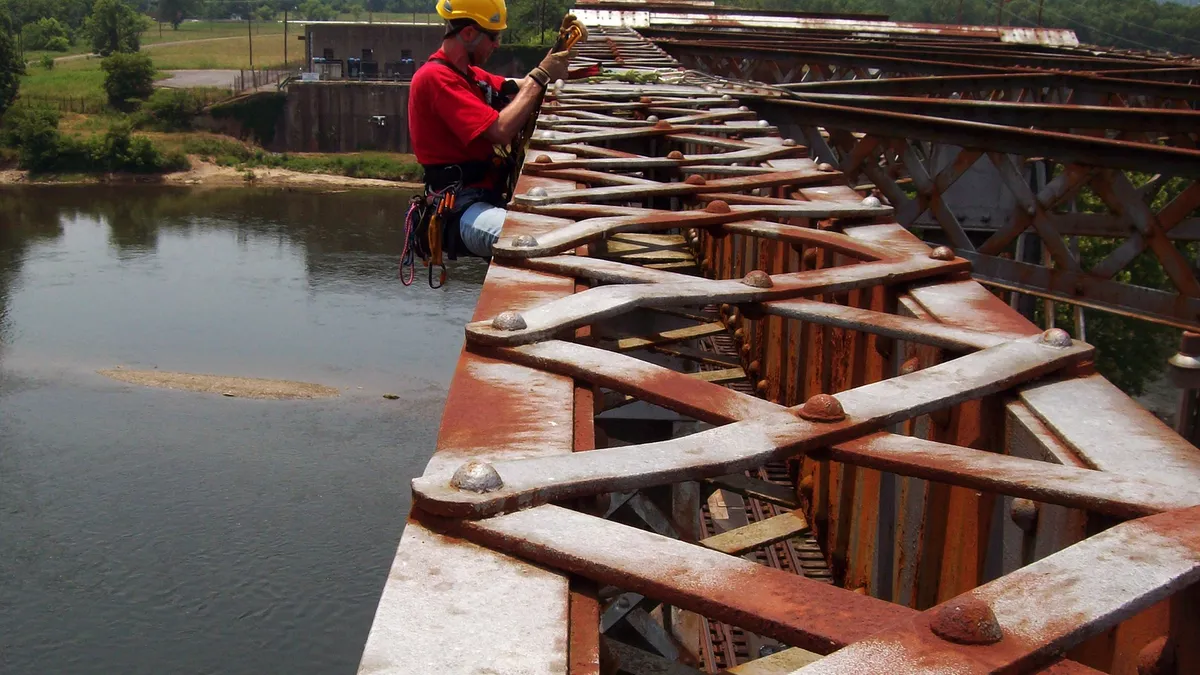Dive Brief:
- Global construction and engineering giant AECOM has teamed up with the University of Salford to research how large infrastructure projects affect the surrounding natural environment, according to BusinessGreen.
- Potential areas of study could include researching the impact of toxic sediment on wildlife, forecasting how construction affects endangered and sensitive species, and exploring what construction industry players think of biodiversity.
- The concept for the research project, which both AECOM and the university will pay for, resulted from AECOM's work as an environmental consultant on the Mersey Gateway highway and bridge project in the U.K.
Dive Insight:
As an advisor on the Mersey project, AECOM has been looking at how the bridge portion affects the local estuary — research which the company plans to use in its initiative with the university. The team members said their work could lead to scientific papers that would help contractors and owners of future infrastructure projects as they try to understand the impact of their work on the environment. Students from the university will be involved in the research, and professor Nigel Mellors, pro vice chancellor for research and enterprise at the university, said the project would allow the team to "deliver real life impact" for "real life challenges."
AECOM recently announced another "green" initiative that the company hopes will enable it to reduce its greenhouse gas (GHG) emissions by 20% in the areas of vehicle fuel, purchased electricity and heating and cooling efficiency. The company said it is making good on a 2015 promise, the result of a White House roundtable, to reduce its GHG emissions by 5 million metric tons for the period 2008-2020.
The green building industry is doubling every three years, according to a report from Dodge Data & Analytics last year. In a show of support for that segment of the construction industry, the United States Green Building Council, during the Paris COP21 talks last year, announced its dedication to scaling green buildings to more than 5 billion square feet during the next five years through its LEED and EDGE certification programs. The USGBC said it would concentrate on green certified buildings, workforce capacity, finance, government policy and strategy, and measurement and accountability.













